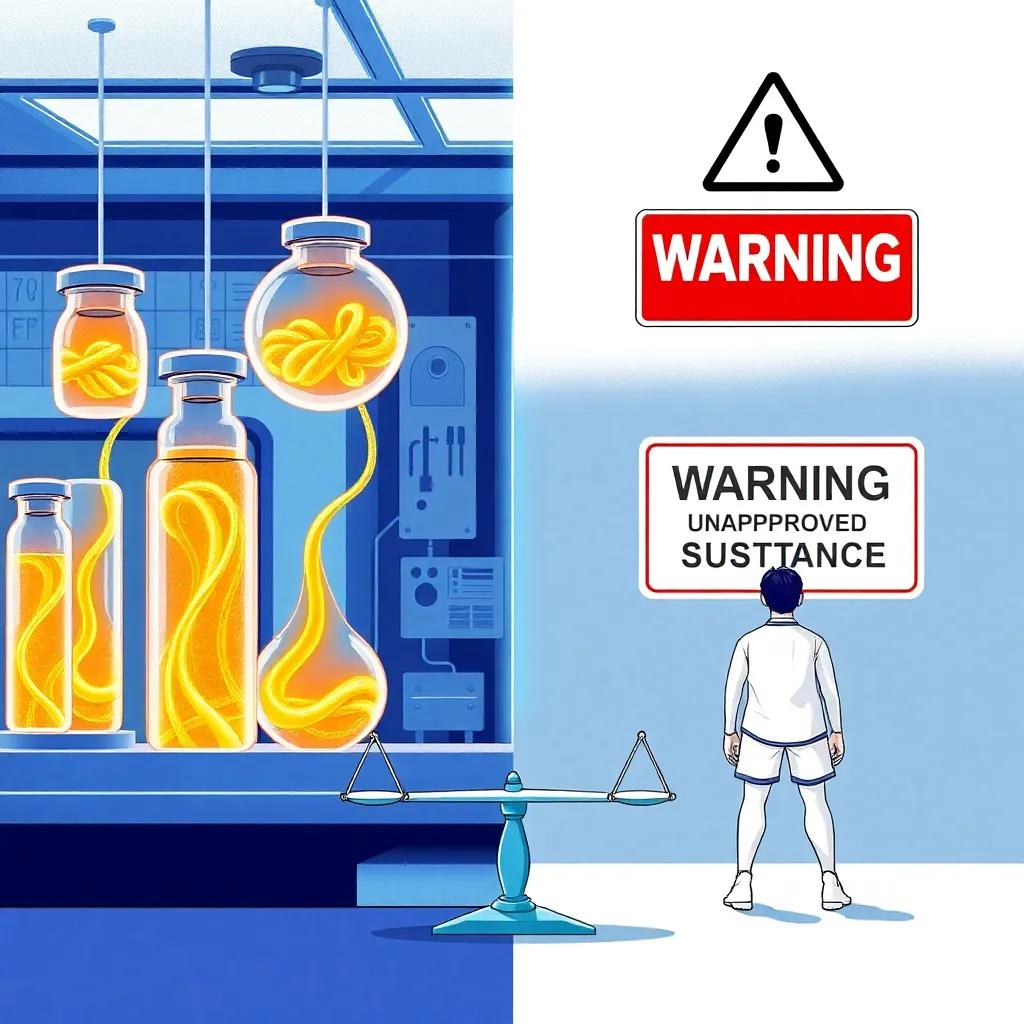Examining the controversial use of BPC-157 for athletic recovery, balancing promising clinical data against regulatory warnings and ethical considerations in professional sports.
As athletes increasingly turn to the experimental peptide BPC-157 for accelerated recovery, medical professionals debate its unapproved status amid compelling early research.
The BPC-157 Phenomenon in Athletic Recovery
In the high-stakes world of professional sports, where recovery time can make or break careers, a synthetic peptide called BPC-157 has emerged as a controversial recovery accelerator. This 15-amino-acid chain, derived from a protective stomach protein, has shown remarkable healing properties in preclinical studies. A 2024 study in the Journal of Orthopaedic Research
demonstrated BPC-157’s ability to enhance collagen synthesis in rotator cuff injuries by 40% in animal models, fueling interest among athletes and sports medicine specialists alike.
Mechanisms of Action: Beyond Basic Healing
BPC-157 appears to work through multiple pathways:
- Angiogenesis promotion (blood vessel formation)
- TGF-β modulation for collagen organization
- Reduction of inflammatory cytokines
- Accelerated granulation tissue formation
Dr. Elena Rodriguez, orthopedic researcher at Stanford University, notes: What makes BPC-157 unique is its systemic effects – we’re seeing improved healing not just at injection sites but in distant tissues when administered orally or intravenously.
This was highlighted in a 2023 meta-analysis published in Sports Medicine Open.
Regulatory Challenges and Safety Concerns
The therapeutic promise of BPC-157 exists in stark contrast to its regulatory status. Australia’s Therapeutic Goods Administration issued a warning in March 2024 about unapproved BPC-157 products being marketed with unsubstantiated health claims. In the U.S., the FDA has not approved any BPC-157 formulations for human use, classifying it as an investigational new drug.
The WADA Monitoring List
Recognizing growing use in professional sports, the World Anti-Doping Agency added BPC-157 to its monitoring program in 2024. While not yet banned, this move signals concern about potential performance enhancement. WADA’s statement clarified: We’re tracking the substance to determine if it meets criteria for prohibition under anti-doping rules.
This creates an ethical dilemma for sports medicine providers. Dr. Marcus Chen, team physician for an NBA franchise, explains: We have athletes asking about BPC-157 daily, but without FDA approval and proper dosing guidelines, we can’t recommend it despite intriguing early data.
Routes of Administration: Oral vs Injectable
The debate extends to optimal delivery methods:
| Method | Bioavailability | Clinical Evidence |
|---|---|---|
| Subcutaneous | High (estimated 70-80%) | Most animal studies |
| Oral | Lower but systemic effects | Limited human case reports |
| Intra-articular | Localized high concentration | Experimental for joint injuries |
A 2023 rat study in the International Journal of Molecular Sciences found oral BPC-157 effective for Achilles tendon healing, suggesting gut absorption may be better than previously assumed. However, human pharmacokinetic data remains scarce.
Future Directions and Ethical Considerations
The medical community remains divided. While some clinicians advocate for accelerated human trials, others caution against premature adoption. The National Institutes of Health has funded three new BPC-157 studies in 2024 focusing on:
- Tendon-to-bone healing in ACL reconstruction
- Dose-response relationships in osteoarthritis
- Long-term safety profiling
As research progresses, the tension between therapeutic potential and regulatory oversight will likely intensify. For now, athletes and clinicians must weigh unverified benefits against unknown risks in this uncharted territory of sports medicine.




